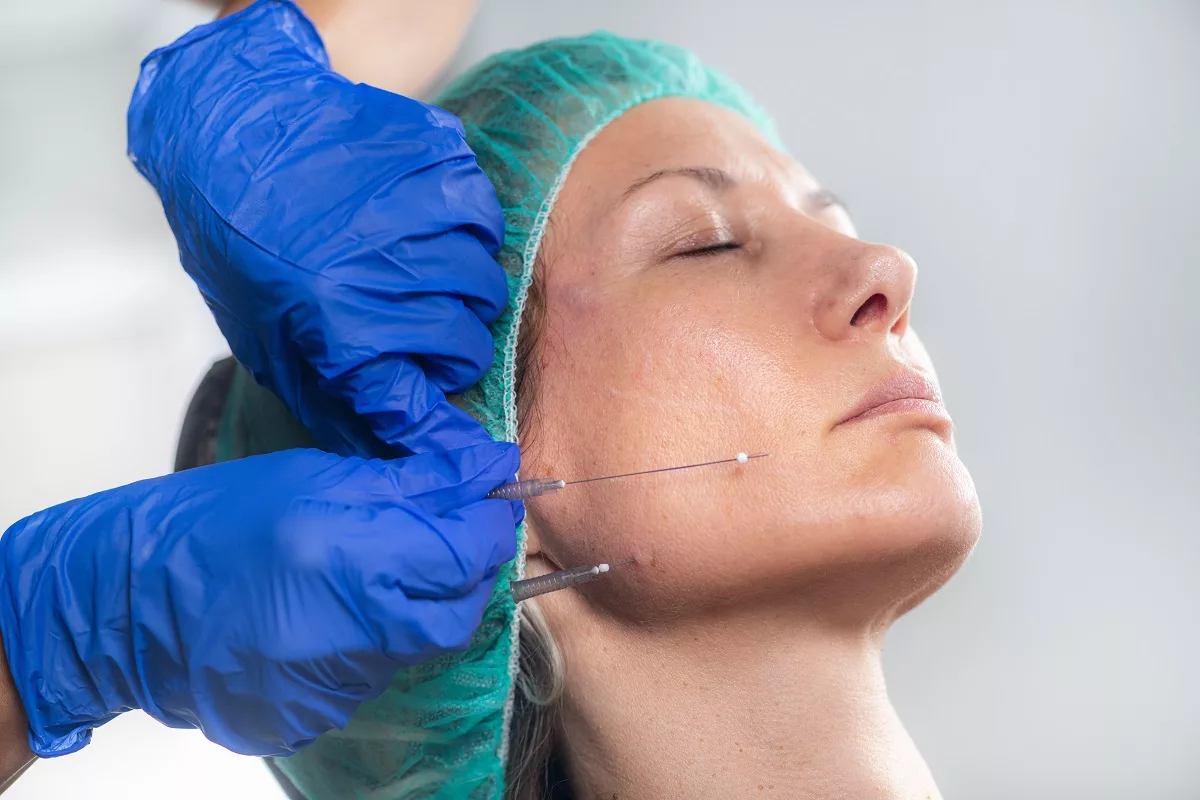Lines and creases that appear on the skin as a normal part of aging are called wrinkles. If you develop wrinkles early in life, it may occur due to smoking or sun damage. Generally, wrinkles do not need treatment unless you want to change how they appear on the skin. Physicians usually recommend over-the-counter (OTC) products, outpatient procedures, or surgery to remove the layers of the skin.
Furthermore, wrinkles look similar to the wrinkles on a shirt that is not ironed. In most cases, they appear as creases, folds, or ridges and are found on the neck, arms, and face. However, wrinkles can appear anywhere on the body.
Usually, wrinkles appear with aging, and you can see fine lines that begin to appear on the body. While it may begin around 25 years old, wrinkles become more prominent after the age of 65. Commonly, people between 40 and 55 years old are looking for treatment.
Symptoms
You can look at the palm of the hand to notice lines in the skin. With aging, you may notice how similar lines to those in the palm appear on other parts of the body. The most common symptoms of wrinkles include lines, creases, or folds on the skin, or droopy or loose skin. In addition, wrinkles are usually apparent when a person rests and can become more noticeable during movement of the facial muscles (such as smiling or frowning). Check below the most common parts of the body where wrinkles appear:
- Face
- Hands
- Arms
- Legs
- Neck
Causes
Wrinkles often appear due to slow skin cell production, thinning skin layers, and reduced or a lack of collagen proteins. A protein that gives the skin structure is called collagen. Moreover, it provides elasticity and stretchiness that help you move easily. In other words, the skin is very similar to a rubber band. When this band stretches or moves too much, it loses the ability to snap back to its normal size. Similarly to the body cells that produce less collagen with aging. As a result, it becomes difficult to snap the skin back to the original shape, which causes wrinkles.
Risk Factors
Physicians have identified some factors that could increase your risk of developing wrinkles. Check below some examples:
Aging
In general, wrinkles are considered a by-product of the aging process. However, the skin cells begin to divide more slowly, and the middle layer of the skin (dermis) becomes thin. Normally, the dermis contains a network of elastin and collagen fibers that help the skin remain elastic. With aging, the skin is also less able to retain moisture and secretes oil less efficiently. A combination of previous factors causes wrinkles to appear.
Facial Muscle Contractions
Usually, the lines on the forehead (between the eyebrows and near the corners of the eyes) often appear due to small muscle contractions that occur when you smile, frown, squint, or make other facial expressions. Over time, these facial expressions, along with aging, cause wrinkles.
Sun Damage
Prolonged exposure to ultraviolet (UV) rays from the sun may cause premature aging of the skin. This process is also known as photoaging, and it occurs because UV rays break down collagen fibers and reduce the production of elastin. Normally, when the sun causes damage to the skin, it begins to produce an enzyme known as metalloproteinase. It helps produce and reform collagen cells.
Smoking
In general, healthy skin regenerates continuously, and old collagen cells break down and are removed from the body, making space for new collagen cells. According to some studies, the use of tobacco products negatively affects the production of new collagen, which increases the risk of wrinkles.
Environmental Factors
Another factor that may increase the risk of wrinkles is air pollutants. These enter the pores and damage collagen cells. Check below for the most common pollutants in the environment that may cause wrinkles:
- Particulate matter – This is a mix of tiny liquids and solids in the air, including dust, smoke, and dirt.
- Soot – This is a very small carbon-based solid material that is produced when something burns. It often occurs in the environment from vehicle exhaust and manufacturing facilities.
- Nitrogen dioxide – This is a gas that exists in the environment. Usually, it is found near vehicles, industrial manufacturing facilities, construction sites, and other places.
How to Prevent Wrinkles?
Unfortunately, there is no sure way to prevent wrinkles at all. However, you can take steps to reduce the risk of getting them. Check below some examples:
- Wear UV protection every day, especially when outdoors (including sunglasses)
- Use skin moisturizers every day
- Avoid tanning beds
- Quit smoking (if you face problems with smoking cessation, do not hesitate to see a healthcare professional)
- Drink plenty of liquids
- Adopt a healthy diet (including fresh fruits, vegetables, and whole grains)
- Regularly wash your face or use a cleanser to remove makeup
Diagnosis
Commonly, a physical examination is enough to diagnose wrinkles. People who want treatment to slow down the effects of wrinkles on the skin should consult with a dermatologist.
Treatment
While wrinkles do not need treatment, some people look for treatment to delay this process. Check below some treatments often recommended for people who do not like how wrinkles look on their skin:
- Anti-wrinkle creams with Retinoids or OTC skin care products to improve hydration and texture. These products may also support collagen production in the body.
- Skin resurfacing techniques – These include microdermabrasion, dermabrasion, and chemical peels.
- Laser skin resurfacing – This procedure is used to reduce facial wrinkles and skin irregularities often caused by acne or sun damage.
- Botulinum toxin type A injection therapy – This is a specific medicine used to block chemical signals that cause the muscles to contract.
- Fillers made of Hyaluronic acid – These fillers are used to lift up folds or deep wrinkles.
- Facelift surgery – During this procedure, surgeons will remove excess skin and fat from the face. It helps tighten tissue layers and make the skin look younger.
However, people who get a prescription for the previous treatments may also experience some adverse reactions. Check below the most common ones:
- Allergic reactions to medicines
- Swelling
- Scarring
- Pain
- Bruising
While some treatments are permanent, others need multiple procedures to maintain the outcomes for a long period.
Frequently Asked Questions
What foods and drinks help reduce wrinkles?
In general, nutrients you eat and drink help the skin stay healthy. It is recommended to add the following to your diet to maintain healthy skin and reduce the risk of wrinkles. For example:
- Vitamin A and vitamin C
- Water
- Protein (including fish, eggs, lean meats, and poultry)
Avoid foods high in fat and sugar because they can cause damage to the collagen cells.
When should I see my healthcare provider?
You can see a doctor if you need a wrinkle treatment plan. Call 911 or go to the nearest emergency room (ER) if you receive the treatment and the skin is not healing or becomes infected. You may also experience severe pain, swelling, bruising, or discomfort.
Does makeup cause wrinkles?
People who do not remove makeup at the end of the day should know that it can clog the pores, which impacts the body’s ability to produce collagen proteins. Therefore, they are at increased risk of developing premature aging and wrinkles. Use a cleanser to remove makeup and make sure the pores are clean. However, if you forget to remove makeup for a few days, it is not dangerous, but if it becomes a habit, your risk of developing wrinkles significantly increases. Ask your healthcare provider if you have any other questions.




